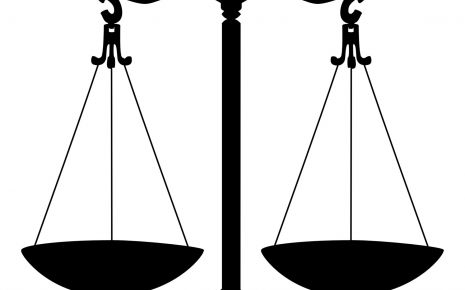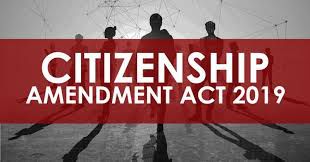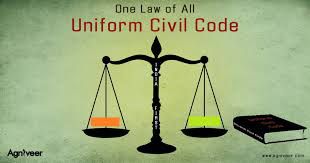Harmonious Construction in Law: Balancing Legal Principles for Effective Governance
In situations where conflicting provisions or sections within a statute arise,
the rule of harmonious construction is employed as a guiding principle. This
rule is rooted in a straightforward concept: every statute is crafted with a
specific legal purpose and intent, necessitating a holistic understanding of the
statute as a complete entity. The guiding approach is to consider all provisions
within the statute as part of the interpretation process.
In cases where harmonization between conflicting provisions proves unattainable, the court's judgment takes precedence in determining which provisions prevail. The rule of harmonious construction stands as a fundamental pillar in the interpretation of statutes, ensuring that the law is applied consistently and comprehensively.
The primary objective of the courts is to interpret statutes in a manner that unifies the enactment into a seamless whole, avoiding any disparities or conflicts between its different sections or components. Courts are guided by a principle to prevent direct confrontations, as described by the Apex Court, within an enactment's various sections, instead striving to reconcile any conflicts among its provisions. The baseline assumption is one of consistency, and it should not be presumed that what the legislature grants with one hand, it intends to retract with the other.
One should steer clear of an interpretation that renders any part of a legal enactment obsolete because harmonizing legal provisions is not synonymous with rendering them meaningless. There's a firmly established principle that any interpretation leading to hardship, injustice, inconvenience, or abnormality should be sidestepped in favour of an interpretation that aligns with the principles of justice and fairness.
The principle of harmonious construction in legal interpretation is not only about resolving conflicts but also about achieving justice, fairness, and preventing injustice. The court stressed the importance of interpreting in a way that supports these values in Union of India v. B.S. Aggarwal (AIR 1998 SC 1537), revealing a clear example of this.
Two conflicting provisions within a statute were the focus of the court's attention in this instance. Such conflicts can pose a challenge in legal interpretation, as they demand a careful balance between preserving the integrity of both provisions and avoiding the rendering of either as inoperative or useless.
The court, in line with the principle of harmonious construction, sought to give effect to both provisions. It was guided by the principle that a construction leading to the inoperativeness or redundancy of any statutory provision should only be adopted as a last resort. Instead, the court looked for a way to reconcile the conflicting provisions and ensure that both were meaningfully applied within the legal framework.
This approach aligns with the court's inclination toward interpretations that favour justice and fairness. Exhibiting the principles of a fair and just legal system, the court demonstrated how harmonious construction can be employed to promote coherence and consistency throughout the law. As a result, the judiciary's function in resolving conflicts of a statutory nature is not only to prevent injustice but to uphold the core values that safeguard the principles of equity and fair play.
In the case of Raj Krishna v. Binod (AIR 1954 SC 202), a classic illustration of the rule of harmonious construction was brought to the forefront. The case revolved around the interpretation of two seemingly conflicting provisions within the Representation of People Act, 1951.
Section 33(2) of the Act appeared to grant government servants the right to nominate or second a candidate in an election. However, Section 123(8) of the same Act seemed to impose a restriction by stating that government servants could not assist any candidate in an election except by casting their vote. These two provisions created an apparent contradiction � one allowed participation, and the other seemingly prohibited it.
In the face of this conflict, the Supreme Court exercised its role as the arbiter of the law. The court upheld the rule of harmonious construction, emphasizing the need to reconcile these contradictory provisions. The court's primary objective was to ensure that both provisions could coexist and have meaningful effect.
The Supreme Court's judgment in this case served as a remarkable example of how legal conflicts could be resolved through harmonious interpretation. In its decision, the court affirmed that government servants did have the right to nominate or second a candidate in an election to the State Legislative Assembly. This outcome exemplified the principle's effectiveness in ensuring that legal provisions, even when initially appearing at odds, can be construed in a manner that harmonizes their application, promoting consistency and upholding the broader principles of justice and fairness in the legal system.
The important aspects of this principle are:
Written By: Md.Imran Wahab, IPS, IGP, Provisioning, West Bengal
Email: [email protected], Ph no: 9836576565
In cases where harmonization between conflicting provisions proves unattainable, the court's judgment takes precedence in determining which provisions prevail. The rule of harmonious construction stands as a fundamental pillar in the interpretation of statutes, ensuring that the law is applied consistently and comprehensively.
The primary objective of the courts is to interpret statutes in a manner that unifies the enactment into a seamless whole, avoiding any disparities or conflicts between its different sections or components. Courts are guided by a principle to prevent direct confrontations, as described by the Apex Court, within an enactment's various sections, instead striving to reconcile any conflicts among its provisions. The baseline assumption is one of consistency, and it should not be presumed that what the legislature grants with one hand, it intends to retract with the other.
One should steer clear of an interpretation that renders any part of a legal enactment obsolete because harmonizing legal provisions is not synonymous with rendering them meaningless. There's a firmly established principle that any interpretation leading to hardship, injustice, inconvenience, or abnormality should be sidestepped in favour of an interpretation that aligns with the principles of justice and fairness.
The principle of harmonious construction in legal interpretation is not only about resolving conflicts but also about achieving justice, fairness, and preventing injustice. The court stressed the importance of interpreting in a way that supports these values in Union of India v. B.S. Aggarwal (AIR 1998 SC 1537), revealing a clear example of this.
Two conflicting provisions within a statute were the focus of the court's attention in this instance. Such conflicts can pose a challenge in legal interpretation, as they demand a careful balance between preserving the integrity of both provisions and avoiding the rendering of either as inoperative or useless.
The court, in line with the principle of harmonious construction, sought to give effect to both provisions. It was guided by the principle that a construction leading to the inoperativeness or redundancy of any statutory provision should only be adopted as a last resort. Instead, the court looked for a way to reconcile the conflicting provisions and ensure that both were meaningfully applied within the legal framework.
This approach aligns with the court's inclination toward interpretations that favour justice and fairness. Exhibiting the principles of a fair and just legal system, the court demonstrated how harmonious construction can be employed to promote coherence and consistency throughout the law. As a result, the judiciary's function in resolving conflicts of a statutory nature is not only to prevent injustice but to uphold the core values that safeguard the principles of equity and fair play.
In the case of Raj Krishna v. Binod (AIR 1954 SC 202), a classic illustration of the rule of harmonious construction was brought to the forefront. The case revolved around the interpretation of two seemingly conflicting provisions within the Representation of People Act, 1951.
Section 33(2) of the Act appeared to grant government servants the right to nominate or second a candidate in an election. However, Section 123(8) of the same Act seemed to impose a restriction by stating that government servants could not assist any candidate in an election except by casting their vote. These two provisions created an apparent contradiction � one allowed participation, and the other seemingly prohibited it.
In the face of this conflict, the Supreme Court exercised its role as the arbiter of the law. The court upheld the rule of harmonious construction, emphasizing the need to reconcile these contradictory provisions. The court's primary objective was to ensure that both provisions could coexist and have meaningful effect.
The Supreme Court's judgment in this case served as a remarkable example of how legal conflicts could be resolved through harmonious interpretation. In its decision, the court affirmed that government servants did have the right to nominate or second a candidate in an election to the State Legislative Assembly. This outcome exemplified the principle's effectiveness in ensuring that legal provisions, even when initially appearing at odds, can be construed in a manner that harmonizes their application, promoting consistency and upholding the broader principles of justice and fairness in the legal system.
The important aspects of this principle are:
- The game must be preserved for everyone, and thus, one part of it can't negate the other. It's akin to ensuring that rules don't get in the way of everyone's enjoyment. The court can step in to decide when merging becomes impossible. However, there may also be instances where merging is impossible. They'll try super hard to find a way for these rules to get along.
- When the court can't completely make these differing rules get along, they have to figure out a way to make both rules count as much as possible. They don't want any of these rules to feel left out or useless.
- Courts always remember that their job is to make sure all the rules in the law are useful and important. They won't let a rule become useless or a "dead number" because that's not what harmonious construction is about.
- The goal here isn't to get rid of a law or make it weak. Harmonious construction is all about making laws work together nicely, like good teammates.
Written By: Md.Imran Wahab, IPS, IGP, Provisioning, West Bengal
Email: [email protected], Ph no: 9836576565
Law Article in India
Legal Question & Answers
Lawyers in India - Search By City
LawArticles
How To File For Mutual Divorce In Delhi

How To File For Mutual Divorce In Delhi Mutual Consent Divorce is the Simplest Way to Obtain a D...
Increased Age For Girls Marriage

It is hoped that the Prohibition of Child Marriage (Amendment) Bill, 2021, which intends to inc...
Facade of Social Media

One may very easily get absorbed in the lives of others as one scrolls through a Facebook news ...
Section 482 CrPc - Quashing Of FIR: Guid...

The Inherent power under Section 482 in The Code Of Criminal Procedure, 1973 (37th Chapter of t...
The Uniform Civil Code (UCC) in India: A...

The Uniform Civil Code (UCC) is a concept that proposes the unification of personal laws across...
Role Of Artificial Intelligence In Legal...

Artificial intelligence (AI) is revolutionizing various sectors of the economy, and the legal i...








Please Drop Your Comments